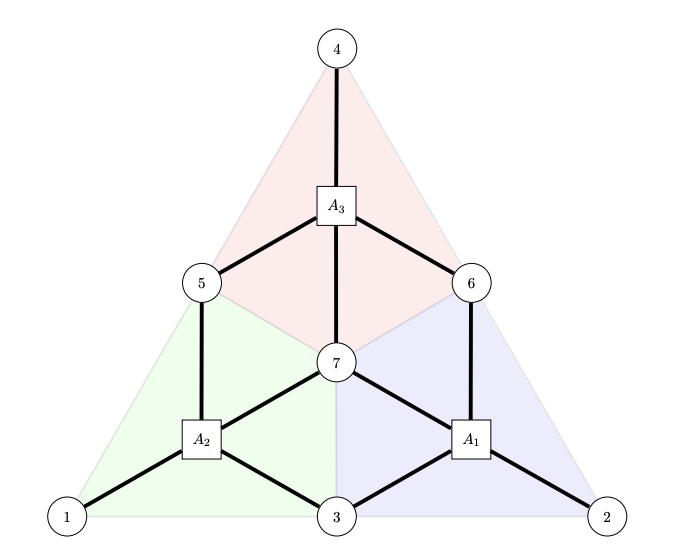Universal Quantum’s Constant-Time Magic State Distillation Simplifies Error Correction

Insider Brief
- Universal Quantum’s constant-time magic state distillation simplifies error correction by producing high-fidelity qubits faster and more efficiently, regardless of qubit configuration size.
- New distillation protocols (7-to-1 and 15-to-1) achieve exponential error suppression rates, potentially making slower platforms like trapped-ion qubits competitive with superconducting qubits.
- Future directions include real-world testing and integration with new quantum error correction techniques like magic state cultivation.
Universal Quantum announced in a company news release an advance in quantum error correction research with what the team is calling constant-time magic state distillation, and add that it could boost quantum computing faster, more feasible and, ultimately, more scalable.
In a study, now available on arXiv, the researchers describe an approach that allows for the rapid generation of high-fidelity qubits, a necessary step to practical fault-tolerant quantum computation.
The research is aimed right at the heart of quantum computing’s main obstacle — errors. Quantum computers are highly sensitive to noise, or small errors in their quantum bits (qubits), which compromise computational reliability, according to the company statement. To mitigate these errors, quantum error correction methods like “magic state distillation” — which we’ll explain below — are employed.
What is Magic State Distillation?
Magic state distillation is a critical process for managing noise and ensuring that quantum gates, especially “T gates,” perform accurately. The T gate is a non-Clifford gate, essential for universal quantum computation but difficult to implement with high fidelity. Unlike other gates, T gates cannot be applied transversally across a qubit array, making them susceptible to introducing noise. Magic state distillation addresses this by consuming multiple imperfect copies of a “magic state” — a specially prepared qubit — to produce a single, high-fidelity version suitable for accurate T-gate operations. The process is akin to filtering several noisy signals to yield a clearer output, crucial for tasks requiring robust computation.
Traditional magic state distillation is resource-intensive and slow, requiring multiple rounds to purify qubits by distilling them from “faulty” states into higher-quality qubits. In these approaches, magic state distillation scale with code distance — or, the number of qubits involved in error correction, requiring roughly six times the code distance (6d) in “code cycles” — units of time required for each step in the distillation process.
However, Universal Quantum’s research introduces a constant-time version of this process. The protocol circumvents the time limitations tied to typical methods by reducing the cycle time to a constant value, independent of qubit configuration size. The researchers write that this constant-time distillation enables quantum devices to operate at significantly enhanced speeds, especially beneficial for platforms such as trapped ions, which historically lag in speed due to slower code cycles compared to other quantum architectures. Universal Quantum’s constant-time distillation is achieved by using an iterative transversal CNOT (or, controlled NOT — a type of quantum gate effective in error-correcting scenarios) decoder, a circuit configuration that leverages specific qubit connections to maintain error suppression without increasing time complexity.
Technical Approach and Results
The research centers on two configurations for distillation circuits — 7-to-1 and 15-to-1 protocols — which respectively distill one high-quality qubit from seven or fifteen lower-quality ones. These circuits are engineered using a surface code architecture, a popular method for fault-tolerant quantum computation. As mentioned, each protocol employs a transversal CNOT gate alongside error-checking steps and resource-state consumption. By iteratively decoding the qubit states, Universal Quantum achieves high error suppression rates. According to the paper, this means the error decreases exponentially with each distillation cycle, supporting large-scale quantum computation by reducing error rates to manageable levels.
Numerical simulations confirm that this constant-time method can achieve effective error suppression, marking a substantial improvement over traditional cycle requirements. By removing dependency on code distance, the Universal Quantum team, who are among the companies exploring the trapped-ion quantum computing modality, claims that their process can bring qubit error rates into a competitive range with superconducting qubits, even on slower architectures like trapped ions and neutral atoms, opening possibilities for universal application across different quantum computing platforms.
Limitations and Future Directions
Universal Quantum’s method will likely face further investigation. The study relies on simulated models rather than physical implementations and that means the actual error rates achievable in a real-world setup remain to be verified. While the theoretical models predict substantial improvements, factors like hardware imperfections, connectivity errors and operational inconsistencies may impact the effectiveness of this approach.
Future directions for this research will likely focus on implementing these distillation protocols in real quantum systems to validate the simulations. A critical area of improvement is the integration of hardware-specific error models, which account for variability in connectivity and gate fidelity. Additionally, the researchers note that an “in-place” Y-basis measurement capability could improve the performance and accuracy of both 7-to-1 and 15-to-1 protocols, potentially enhancing overall distillation effectiveness. Universal Quantum is also preparing an analysis of long-range qubit connectivity error impacts, which may be vital for scaling this technology to larger quantum processors.
Another key consideration is how these constant-time protocols might adapt to new methods in quantum error correction, such as magic state cultivation. Recent work in this area suggests that cultivated magic states may yield very high fidelity, potentially reducing the need for multi-level distillation altogether. However, many algorithms still require high “T-counts” (the number of T-gates per computation), which necessitates ongoing development of effective single-level magic state distillation techniques.
The work does position the company at a crucial moment in quantum error correction, as the demand for fault-tolerant quantum computing intensifies across various industries. Because error correction has historically been a significant bottleneck in developing quantum computers that can solve complex, real-world problems, the ability to distill high-quality qubits more efficiently could accelerate progress. That, could then lead to advances in fields like cryptography, pharmaceutical discovery and complex modeling, where quantum computers offer substantial advantages over classical machines.
